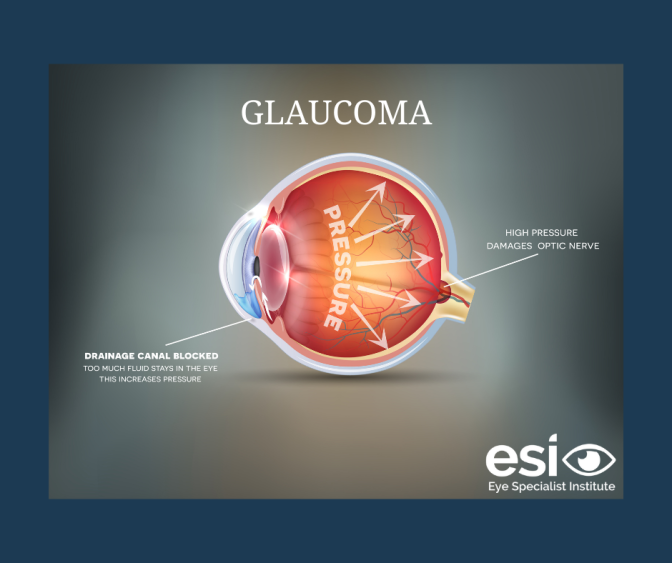Glaucoma is the term for a group of eye diseases which cause vision loss because of irreversible damage to the optic nerve, usually related to raised intraocular pressure (IOP).
A danger of glaucoma is that in the early stages, you may not experience any symptoms even as your sight is being irreparably damaged.
There are many different types of glaucoma, including:
The most common form, accounting for approximately 90% of glaucoma cases in Australia.
This type of glaucoma can be a medical emergency and immediate treatment is required.
This type of glaucoma is when optic nerve damage occurs despite apparently normal intraocular pressures.
This type of glaucoma is when there is optic nerve damage related to previous surgery, intraocular infections, ischaemic (poor blood supply), or inflammatory conditions.
This is an uncommon type of glaucoma, present in newborns. It usually presents with watery eyes, enlarged eyes (buphthalmos), and hazy corneas.
Glaucoma is a progressive lifelong disease and while there is no cure, there are treatments available to slow or prevent future vision loss.
What are the Symptoms of Glaucoma?
Glaucoma has been called the “silent thief of sight” because it can cause irreversible damage to your optic nerves over time before you notice any vision loss.
Whilst in the early stages, you may not experience any symptoms, however progressive loss or darkening of your side or peripheral vision, tunnel vision, and even full blindness can occur if left untreated.
Early diagnosis and treatment are critical, as glaucoma can have life-change impacts in reducing your independence, and potentially stopping visually significant activities, including driving.
No obvious symptoms in the early stages but as the condition progresses you may notice:
Patchy blind spots in your side (peripheral) or central vision
Tunnel vision
Watery eyes
Blurred vision
Halos around lights
Glare sensitivity
Eye pain, redness, and acute loss of vision
Nausea and vomiting
Severe headache
Note that these symptoms can be similar to a bad migraine or tension headache.
Any severe headaches with loss of vision should be reviewed by a medical professional promptly.
The following image gives an impression of glaucoma vision loss.

How does Glaucoma occur?
In a healthy eye, there is a balance between the normal fluid production (aqueous humour) by the ciliary body and the fluid that leaves the eye through its in-built drainage system.
Normal intraocular pressure for ~95% of people is between 10-21mmHg, although it can vary during the day and with certain medications.
An overproduction of fluid or reduced drainage of fluid can result in raised intraocular pressure (IOP) and this causes damage to the optic nerve. In most cases, raised intraocular pressure (IOP) is due to a problem with the eye’s drainage system.
Some people may experience glaucoma despite having a normal eye pressure if there is an underlying weakness in the optic nerve, known as normal tension glaucoma.

Testing for Glaucoma
Early glaucoma usually cannot be self-detected. Only an Optometrist or an Ophthalmologist can determine your likelihood for glaucoma and the need to commence treatment.
Your eye specialist will need to conduct several tests to check for glaucoma and 6 common tests include:
Checking the drainage angles of the eyes (gonioscopy), followed by a full dilated examination of the back of the eye to assess the optic nerve, retina and macula. This provides risk assessment and baseline measurements.
Measures your intraocular pressure as one of the main risk factors for glaucoma.
Measures the thickness of the cornea, which may affect the intraocular pressure.
Automated tests for which can detect early peripheral vision loss and monitor progression.
A comparative scan of your optic nerve against a normal database to aid diagnosis of glaucoma and allow monitoring of progressive optic nerve damage.
Treatment and Management of Vision Loss
Many treatments are available that can help to slow or halt vision loss, by lowering the intraocular pressure to a safe range.
Reduce the amount of fluid produced in the eye or open the drainage channels. It needs to be taken once, twice or three times a day, every day. These drops are generally well tolerated with few side effects, which will be discussed by your prescribing specialist.
Often used to treat open angle / pigment dispersion glaucoma. The targeted laser treatment causes remodelling of the drainage angle to improve fluid outflow. There are only a few side effects, the effect can last years and can be safely repeated over time.
Involves placement of one or more ‘stents’ into the drainage angle of the eye to allow aqueous fluid to flow out of the eye. Some MIGS procedures can be performed at the same time as cataract surgery and can help to reduce the reliance on medicated eye drops.
A permanent shunting procedure used to effectively reduce IOP by creating an alternate outflow for the aqueous fluid in the eye to the subconjunctival space.
A permanent procedure resulting in reduction of aqueous humour production from the ciliary body.
The exact treatment regimen will be determined by the type of glaucoma, the response to treatment and the severity of optic nerve damage. In many cases, a combination of treatments is required.
While treatment can help to prevent further vision loss, damage already done is irreversible.
The earlier the diagnosis, the more effective the treatment and the better we can protect your vision.